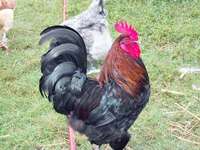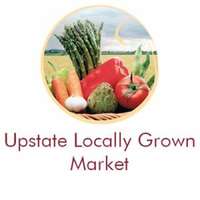The Weblog

This page contains news, event information, and other items added by the market managers.
“Thanks to all who make this possible!!” ~
DM, Greenville SC
“I’m really happy with everything I received. How juicy and tasty
I’m so thankful for reliable growers and market.” ~ MC, Greenville SC
Harvest News: Thurs, March 7-Monday, March 11
This post expired on March 08, 2023.
-

Clemson Locally Grown Market
http://clemson.locallygrown.net/
To Contact Us
CLICK HERE TO UNSUBSCRIBE OR CHANGE YOUR ACCOUNT STATUS
TO CONTACT US
Market Administrator
Donna Putney
USLG GREENVILLE MARKET MANAGER Anna Schneider
HARVEST NEWS EDITOR/ CLEMSON MARKET MANAGER
Heidi Williams
GREENWOOOD MARKET MANAGER/VOLUNTEER COORDINATOR
Virginia Dumont Poston
DROP_OFF SCHEDULE
Recipes

Beef And Barley Soup
Ingredients for Beef Broth
2 1/2 to 3 pounds soup bones, with meat *
1 large onion, halved widthwise *
2 tablespoons olive oil
3 teaspoons Worcestershire sauce
2 teaspoons soy sauce
1 teaspoon kosher salt, plus more to taste
Freshly ground black pepper
Soup
5 tablespoons olive oil, divided
3 medium carrots, peeled, halved lengthwise and cut into 1/4-inch thick slices
2 ribs celery, halved and cut into 1/4-inch thick slices
2 medium parsnips, peeled, halved and cut into 1/4-inch thick slices
1 small onion, coarsely chopped
1 small potato, peeled and cut into 1/2-inch cubes *
1 cup pearl barley
2 leafy sprigs fresh thyme
8 ounces sliced white or cremini mushrooms
Chopped parsley (optional) *
Preheat the broiler. Toss the beef and onion with 3 tablespoons of oil and arrange in a single layer on a foil-lined sheet pan. Set the pan about 4 inches beneath the broiler. Broil, turning partway through, until richly browned on both sides — 3 to 4 minutes per side.
Set the browned meat and onion in a stockpot or heavy soup pot. Add Worcestershire sauce, soy sauce, salt, pepper and water (at least 2 1/2 quarts) to cover. Bring just to the boil and reduce to a simmer. After about 10 minutes, skim off any foam that’s collected at the top. Continue simmering over the lowest possible heat for 1 1/2 to 2 hours.
While the broth is simmering, heat 3 tablespoons olive oil in a large, heavy skillet. When hot, add the carrots, celery, parsnips and onion and saute until just slightly softened, about 5 minutes.
When the meat is falling-apart tender, lift it out with a slotted spoon and allow it to cool slightly on a cutting board. Strain the broth into a clean soup pot — you should have about 1 1/2 quarts —and add the sauteed vegetables. Add the potato, barley and thyme to the pot. Pull apart the reserved meat into small chunks with your fingers, including the gelatinous tendon if you wish, and add to the soup pot. Bring mixture to a simmer and cover until the barley and meat are tender, 45 to 60 minutes. Stir occasionally, adding more water if consistency becomes too thick.
Meanwhile, in the skillet you used for the vegetables, heat the remaining 2 tablespoons of olive oil over medium-high heat until it shimmers. Add the mushrooms and saute, turning, until lightly browned, 4 to 5 minutes.
When the barley and potatoes are tender, add the mushrooms and season with salt and pepper to taste. Garnish with chopped parsley, if desired.
“*” indicates ingredient is available on Upstate Locally Grown
Market News
WELCOME CLEMSON USLG CUSTOMERS

The countdown to Spring has begun. Use the next food pickup to stock up on all your winter faves. The next Clemson delivery will be THIS Tuesday, March 12, 2013 at the Clemson Montessori School. from 4:30-5 p.m.
Nature’s Beef is all stocked up and ready for your beef orders. Many of us have met Richard Taylor, owner of Nature’s Beef, when he’s come from Honea Path to help Donna with the drop off. Richard’s farm, Bar T Ranch, consists of 480 acres and is located in Anderson County, centrally located, about 25 miles from Anderson, Greenville, Greenwood and Laurens.
His grandfather purchased the land in the 1930s, as all southern farms in those days, it was mostly growing cotton and raising mules. The first beef cattle were purchased in the 1940s. Purebred Angus were purchased in the 1950s.
Today, Bar T Ranch is home to the third- and fourth-generation farmers, working together to provide a safe, wholesome, and nutritious product for your family. By using the tools available in the cattle industry today, along with the Lord’s guidance, Richard feels as though these goals are definitely achievable. Many of their cuts of beef – steaks, roasts or hamburger, over 30 different cuts in all, as well as purchasing a half or whole beef.
To inquire about a half or whole cow, contact Richard at (864) 369-7181 or visit his Web site at
http://www.naturesbeef.net/.
Spurgeon Farm still has a variety of winter veggies, including collards, beets, kale, and more. Check out their offerings and more under vegetables.
In addition to your order of Putney Farm Eggs (duck and chicken) and sweet potatoes, Nature’s Beef, Welch & Son sausage and chicken, Happy Cow milk products, Swamp Rabbit Cafe baked goods, and more, be sure to click on vegetables on the left-hand navigation bar of our market page and spend some time browsing veggies.
Occasional CSA Box
For veggie lovers with commitment issues
No need to pay up front. We will give you what’s fresh and bountiful in an occasional box for $25. Just order as you like, once a week, once a month, or just once in a while. Here are a few things you can look for in this week’s $25, occasional CSA box. Be sure to order yours today! We have a limited number of these available, so act fast!
- salad microgreens
- winter greens from Spurgeon farms
- Happy Cow cheese
- and a few fun surprises!
We thank you for registering at Clemson Locally Grown Please encourage your friends, family, and co-workers to join you.
Clemson Locally Grown donates 3 percent of our order profits to Clemson Montessori School, in return for use of their school parking lot as a drop-off location. We also appreciate the helpful hands of CMS market volunteers. Feel free to lend your hands, if you have a moment to do so.
Donna’s Corner

This week, I wanted to share with you this article about the difference between organic and sustainable and beyond organic farms that protect soil and food quality by avoiding:
- pesticides
- chemical fertilizers
- herbicides
- antibiotics
- growth hormones
- and genetically modified seed.
USDA Certified Organic is a real certification. Sustainable is not a certified label or official policy. Most people consider sustainability a philosophy that describes planet protective actions that can be continued indefinitely, without causing damage to the environment.
That said, while you can’t officially label a food product as “Sustainable,” sustainable farming is not just a philosophy. Sustainability is observable and measurable via economic profit, social benefits for the community and environmental conservation.
There are various definitions of sustainable agriculture. The Alliance for Sustainability offers four goals based on the following values:
- Ecological soundness
- Economic viability
- Social justice
- Humaneness
Part of the definition offered by ATTRA, the National Sustainable Agricultural INformation Service, includes: “Sustainable agriculture is one that produces abundant food without depleting the earth’s resources or polluting its environment. It is agriculture that follows the principles of nature to develop systems for raising crops and livestock that are, like nature, self-sustaining. Sustainable agriculture is also the agriculture of social values, one whose success is indistinguishable from vibrant rural communities, rich lives for families on the farms, and wholesome food for everyone. But in the ?rst decade of the 21st Century, sustainable agriculture, as a set of commonly accepted practices or a model farm economy, is still in its infancy—more than an idea, but only just.”
The U.S. Department of Agriculture provides a legal definition that says it is an "an integrated system of plant and animal production practices having a site-specific application that will, over the long-term
- Satisfy human food and fiber needs.
- Enhance environmental quality and the natural resource base upon which the agriculture economy depends.
- Make the most efficient use of nonrenewable resources and on-farm resources and integrate, where appropriate, natural biological cycles and controls.
- Sustain the economic viability of farm operations.
- Enhance the quality of life for farmers and society as a whole.
The bottom line is that sustainable agriculture provides an opportunity for small farmers to make a living for themselves and their families by embracing farming practices we can all be proud of, by acting as stewards of the earth and the animals who share the planet with us.
Happy eating!
Donna
FREE MONTH OF MEMBERSHIP!
Did you know, anyone who has a recipe or article published in the Harvest News is entitled to one added month of membership! Tell us about your garden, share your favorite eats with us, or even a book review. Please email your CLG content to Heidi.
We appreciate Clemson Montessori School for allowing us to host our drop-off in their shady parking lot!
And we thank you for your interest and support of our efforts to bring you the healthiest, the freshest and the most delicious locally produced foods possible! Be sure to “like” us on Facebook so you can stay in touch with all the latest updates.
Have a wonderful week, happy shopping on USLG, and may you enjoy good family meals from all your goodies!
Donna and Lenard, Heidi, and the whole gang of Market helpers.
